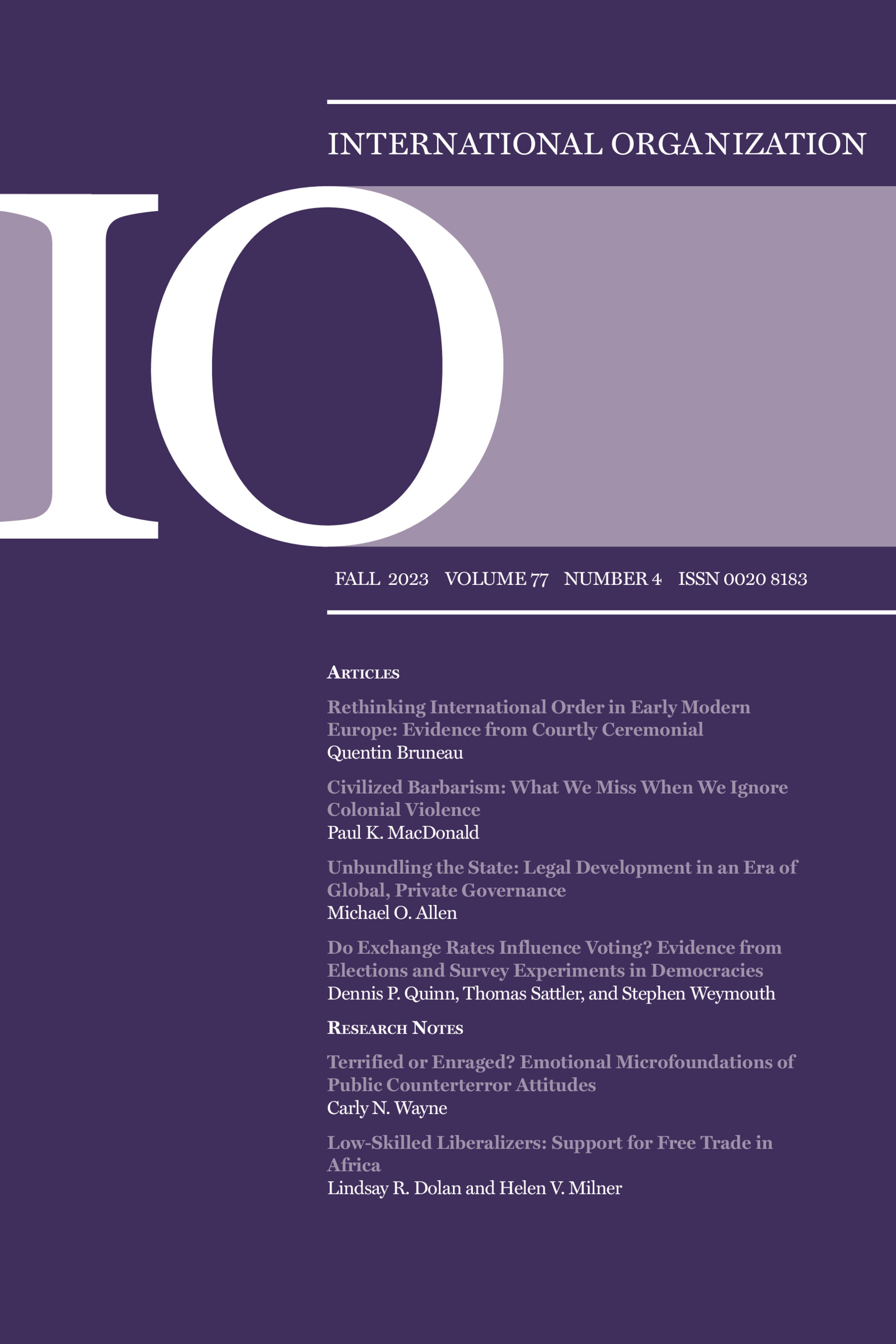重新思考近代早期欧洲的国际秩序:来自宫廷仪式的证据
IF 4.5
1区 社会学
Q1 INTERNATIONAL RELATIONS
引用次数: 0
摘要
关于近代早期欧洲作为一个主权国家的无政府体系的传统说法,曾经是人们达成共识的对象,但现在,从主权国家的存在到无政府状态的概念,甚至是该体系的欧洲范围,都受到了争论。在这些分歧的背景下,我以历史行动者的观点为基础,对近代早期欧洲的国际秩序进行了新的描述。我首先认为,这可以通过研究从业者用来描述和组织世界上的政治权威的工具来实现。随后,我深入研究了一群被称为仪式大师的实践者开发的一种常见但很少被研究的工具:宫廷仪式(或ius preecentiae)。我有三个实质性的主张。首先,宫廷礼仪手册中确定的政治权威主要是王权和共和国,但在18世纪后期,最终都被描述为“国家”。其次,所有的政治权威都是由一套特定的标准决定的,但新的标准——权力和主权——在18世纪出现了。第三,国际秩序的范围并非不言自明,在主持仪式的人看来,它当然没有明确的“欧洲”界限;非欧洲国家的政治权威很容易被纳入它们的优先顺序。最后,我建议国际关系学者应该重新考虑他们为什么要研究早期现代欧洲,以及他们如何研究国际秩序。本文章由计算机程序翻译,如有差异,请以英文原文为准。
Rethinking International Order in Early Modern Europe: Evidence from Courtly Ceremonial
Abstract Once the object of consensus, every aspect of the traditional account of early modern Europe as an anarchic system of sovereign states is now debated—from the existence of sovereign states to the notion of anarchy, and even the European limits of that system. In the context of these disagreements, I develop a new account of international order in early modern Europe grounded in the perceptions of historical actors. I first argue that this can be achieved by studying the tools that practitioners relied on to describe and organize political authority in the world. I subsequently delve into a common, though seldom-studied, tool developed by a group of practitioners known as masters of ceremonies: courtly ceremonial (or ius praecedentiae ). I make three substantive claims. First, the political authorities identified in manuals on courtly ceremonial were primarily crowns and republics, but in the later eighteenth century, all eventually came to be described as “states.” Second, all political authorities stood in a hierarchy determined by a specific set of criteria I identify, but new criteria—power and sovereignty—emerged over the course of the eighteenth century. Third, the scope of international order was not self-evident, and it certainly did not have clear “European” limits in the eyes of masters of ceremonies; non-European political authorities could easily be integrated into their orders of precedence. Ultimately, I suggest that IR scholars should reconsider why they study early modern Europe and how they study international orders.
求助全文
通过发布文献求助,成功后即可免费获取论文全文。
去求助
来源期刊

International Organization
Multiple-
CiteScore
14.50
自引率
1.30%
发文量
25
期刊介绍:
International Organization (IO) is a prominent peer-reviewed journal that comprehensively covers the field of international affairs. Its subject areas encompass foreign policies, international relations, political economy, security policies, environmental disputes, regional integration, alliance patterns, conflict resolution, economic development, and international capital movements. Continuously ranked among the top journals in the field, IO does not publish book reviews but instead features high-quality review essays that survey new developments, synthesize important ideas, and address key issues for future scholarship.
 求助内容:
求助内容: 应助结果提醒方式:
应助结果提醒方式:


